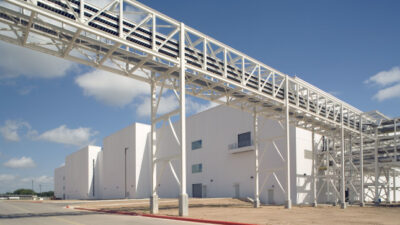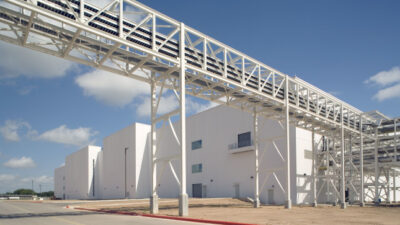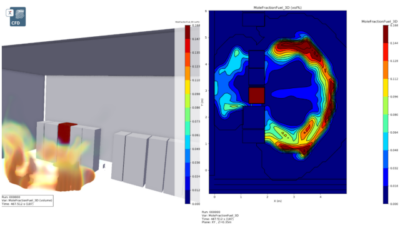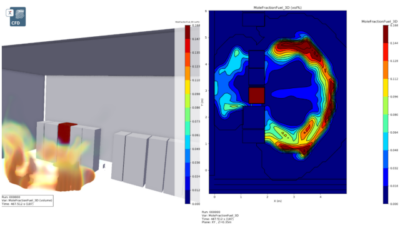Whether they go to Las Vegas to see Wayne Newton, Celine Dion or Cirque du Soleil, the last thing that the public wants is a theater that goes dark in the middle of the show. But this isn’t just about losing money on an expensive ticket. More importantly, there’s the matter of fire, life-safety and emergency egress lighting systems functioning correctly.
The owners of these venues have a two-fold challenge. They want to protect their multi-million dollar investments, which is why the major hotel-casino complexes have installed super-size redundant emergency power plants. But they also need to protect their guests.
In a discussion of power quality and reliability in large assembly venues, Las Vegas comes to mind because it is the annual destination of so many show-goers and conventioneers. In fact, a perennial headliner in Vegas is Power-Gen International Conference and Expo. By the time this issue hits the streets, this year’s Power-Gen will have already take place at the Sands Expo Convention Center on Dec. 5—7.
The Sands, by the way, is part of the 7-million-sq.-ft. Venetian complex that has installed five 2,000-kW Caterpillar 3516B diesel generators with 2,934 hp, part of a power distribution and management system designed by Electrical Systems Consultants, Fort Collins, Colo., in conjunction with General Electric Industrial Systems.
With respect to emergency power for fire and life-safety systems, Clark County and Las Vegas codes require that power must be up and running within 10 seconds and then 60 seconds of any power loss.
But back to the specific issue of performance venues, while guaranteeing a show for the audience may not be life-and-death in the human safety sense, it is for the financial welfare of the owner, who must invest a considerable amount to ensure reliable, high-quality power for sophisticated digital lighting and staging systems. The following case studies offer a few glimpses at how large occupancy venues address issues of both power reliability and quality.
Case: Las Vegas
These days, mention of Las Vegas entertainment more than likely brings to mind the performing arts troupe Cirque du Soleil. Last January, the planning and design firm, Auerbach Pollock Friedlander, San Francisco, announced completion of a 1,951-seat theater, the fourth permanent theater in Las Vegas for Cirque du Soleil.
The former production space of EFX was taken back to a shell and a completely new theatre and lobby environment was created in its place, accommodating the design and production requirements by Cirque du Soleil. Auerbach Pollock Friedlander’s collaboration with Cirque du Soleil, the MGM/Mirage Design Group and architect Marnell Corrao Assocs. enabled the development of state-of-the-art theatrical systems and their careful integration with the building, supporting the show’s unique performance requirements.
A series of new “company switches” and equipment power was distributed throughout the theatre. These power sources are used for chain hoists, special effects and specialty equipment which is distributed throughout the space.
The theater also boasts one of the largest and most complex theatrical lighting networks ever designed for a single venue. Naturally, emergency power is a vital part of these systems. Emergency power transfer to selected architectural circuits is handled with six 24-circuit UL 1008 compliant emergency transfer panels. All networked power circuits for consoles, PCs and other sensitive computer grade components are on dedicated centralized UPS circuits.
Case: Orange County, Fla.
On the other side of the country, in the heart of Florida’s entertainment region, is another venue that attracts hundreds of thousands of visitors each year. Like performing arts theaters and conference halls, convention centers are all about open, large occupancies with scheduled shows—and reliable emergency power is a must for these multimillion dollar productions.
When the Orange County Convention Center in Orlando completed the 2.8-million-sq.-ft. fifth phase of its expansion, it became the second largest convention center in the United States. A venue of this size and complexity needed an “unconventional” solution for its standby power system for lighting, security and life-safety systems. The project’s general contractor, Hunt Construction, turned to Cummins Southeastern Power.
The Phase V building at the convention center is a separate structure with its own standby power system. Other phases of the enormous complex have their own standby power, but this newest addition “is unconventional in several ways,” according to Mike Sincavage, electrical manager with Hunt.
The most unusual aspect of the system is that it’s located in another building almost half a mile away. The generators are connected by a 15-kV underground power line to minimize line losses. Communication with 72 automatic transfer switches (ATS) is carried out over a fiber-optic cable system. The power system’s digital master control also communicates with the facility’s building management system (BMS) for various operations and maintenance functions.
The standby power system consists of four 1,500-kW Cummins diesel gensets, along with associated controls, switchgear and ATS. In this case, it goes beyond just protection for lighting and life-safety systems. It also provides emergency power to ventilation fans, food courts and elevators. Not only are visitors allowed to safely exit the building, but it also prevents food spoilage.
But the standby power system is just one of several layers of power redundancy built into the facility. With 11 separate feeds from the Orlando Utility Commission—a total connected load of 36 MW—one would think that the facility is well-protected from utility outages. However, said Sincavage, “Orlando is the lightning capital of North America, and momentary outages are common.” One can’t afford to forget that this is a land of hurricanes and tropical storms.
In fact, Hurricane Charley, which struck Florida in Aug. 2004, was the ultimate test of the system—which passed with flying colors. “The building was not hosting a show when … Hurricane Charley passed directly over Orlando and knocked out a significant amount of power in the area,” said Brian Kennedy, assistant HVAC supervisor of the convention center. “Although some buildings in the convention complex did not lose [primary] power, the Phase-V complex did, and the new standby power system came on and operated as designed for several hours.”
When a power outage occurs, all four generators come up to operating speed in about eight seconds. The first generator to reach speed and proper frequency closes with the main bus. If one or two are sufficient to carry the emergency load, the other two shut down and remain on standby. Once normal power is restored, the generators go into “cool down” mode before shutting down.
“The whole standby system is automatic,” said Kennedy. “Plus, it is designed to ‘fail-on,’ meaning that even if the fiber-optic communication network fails, the generators will start and be available for power.”
With a current emergency load of about 2 MW, the 6-MW standby system is obviously very much oversized. It’s an indication of how important officials consider their duty to keep the power on and the show going. And they also want to be able to expand in the future. in fact, the off-site power building was designed to house an additional 6 MW, for a total 12 MW of standby power.
Finally, the novelty of the solution also includes the digital control system that interfaces with the building automation and management systems. “The standby power system is tied directly into the Johnson Controls BMS,” said Kennedy. “We have it set up so that whenever the generators start, the BMS issues an alarm condition that tells us the generators and running and available for power.”
As is the case for performance venues, conventions centers want to keep the audiences coming to their facilities—and keep the shows on track. There’s millions of dollars riding on a smooth show, but the life-safety function of reliable power backup is priceless.
Powering Fire and Life Safety Systems
Clark County in Nevada , where Las Vegas is located, has a 10-second code for emergency power. Fire and life-safety equipment have to be up and running in that amount of time after a power outage. In order for patrons to exit a large assembly space in case of fire or other emergency, they need to see where they are going and be directed out of the building. All critical functions—fire protection equipment, horns and strobes, and communications equipment—must have the power to operate.
Powering Emergency Systems: NEC 2005
The new 2005 National Electrical Code has some changes that could significantly transform the way emergency distribution systems are designed and built. Below is one section from the 2005 NEC that pertain to large assembly spaces:
NEC Section 700.1 FPN no. 3: Emergency systems are generally installed in places of assembly where artificial illumination is required for safe exit and panic control … Emergency systems may also provide power for such functions as ventilation … fire detection and alarm systems, elevators, fire pumps, public safety communication and industrial process …



